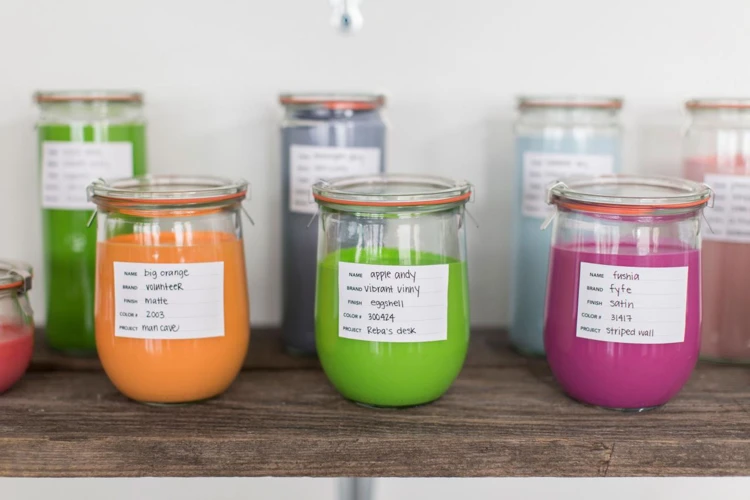Latex paint, a popular choice for both DIY enthusiasts and professional painters, requires proper storage to ensure its longevity and quality. The ability to store latex paint effectively can save time and resources, while also minimizing waste. This comprehensive guide will explore the ins and outs of keeping your paint in prime condition for future projects.
Understanding Latex Paint and Its Shelf Life
Before we delve into the specifics of preservation, it’s important to understand what latex paint is and the typical latex paint shelf life. Composed primarily of water as a solvent, latex paint is known for its ease of application and quick drying time. Under optimal conditions, a well-sealed can of latex paint can last up to 10 years, but various factors can impact this duration.
Factors Affecting Latex Paint Shelf Life
The longevity of latex paint hinges on several conditions, including exposure to extreme temperatures, air, and humidity. These elements can cause paint to thicken, separate, or develop a film, compromising its quality and usability.
How to Store Latex Paint
Ensuring the integrity of your paint involves more than just finding a spot on the shelf. Correctly storing your latex paint is paramount to maintaining its original consistency and color.
Best Way to Store Latex Paint
The consensus among experts for the best way to store latex paint is to keep it in a cool, dry place. A basement or climate-controlled space away from direct sunlight is ideal. In addition, positioning the cans upside down can help create a tighter seal around the lid.
Sealing Latex Paint for Storage
Sealing latex paint for storage is straightforward yet critical. Clean the can’s rim to ensure a tight seal, then tap the lid firmly in place using a rubber mallet. This helps prevent air from entering and drying out the paint.
Latex Paint Storage Temperature
Temperature plays a crucial role in paint storage. The latex paint storage temperature should ideally be between 60-80°F (15-27°C). Extreme temperatures can lead to irreversible damage, rendering the paint unusable.
Preserving Latex Paint
Prolonging the life of your paint demands attention to detail. By following a few key steps, you can preserve its quality for years to come.
Keep Latex Paint from Drying Out
To keep latex paint from drying out, ensure the lid is securely sealed after each use. For added protection, you can place a layer of plastic wrap over the opening before closing the lid. This helps to further isolate the paint from air exposure.
Storing Unused Latex Paint
When storing unused latex paint, it’s best to keep it in its original container with the label intact. This assists in identifying the paint’s color and type at a later date. If the original can is damaged, transfer the paint to a clean, airtight container.
Latex Paint Storage Tips
- Label the cans with the date of purchase and the room where it was used for easy reference.
- Check the seal periodically and ensure the storage area maintains a consistent temperature.
- Do not store paint cans on cement floors, as they can rust from the bottom up.
Proper Resealing Techniques
Using proper resealing techniques is crucial. After pouring the paint, wipe the rim clean, replace the lid, and then gently tap all edges with a mallet to guarantee an airtight closure.
Maintaining Optimal Conditions
Maintaining optimal conditions for your paint involves monitoring the temperature and humidity levels of the storage area. A dehumidifier can help control the moisture in the air, safeguarding your paint against spoilage.
Identifying and Handling Expired Latex Paint
Even with the best care, latex paint doesn’t last forever. Recognizing when it’s time to say goodbye to your old paint is part of proper paint management.
Signs of Unusable Latex Paint
Signs of unusable latex paint include a foul odor, lumps, or a skin on the surface. If the paint doesn’t mix well after stirring or the consistency has changed significantly, it’s likely time to dispose of it.
If you’re a DIY enthusiast or a professional painter, understanding the ins and outs of paint storage and application is crucial. For those who have leftover latex paint and want to make sure it stays in good condition, our guide on how to store latex paint could be incredibly helpful. Additionally, if you’re deciding between different types of paint for your next project, you might want to read our comparison of latex vs. oil-based paint. For those interested in more eco-friendly or traditional options, our tutorial on how to mix milk paint for furniture can provide a sustainable alternative with a unique finish.
Disposal of Latex Paint
Proper disposal of latex paint is environmentally important. Many local waste management services offer specific guidelines and drop-off locations for paint products. Always consult with your local regulations to ensure eco-friendly disposal practices.
In conclusion, understanding how to store latex paint is essential for any painting project. With the right knowledge and care, you can preserve the quality of your paint, save money, and reduce waste. Implement these storage and preservation tips to extend the life of your latex paint and ensure your next DIY endeavor or professional project starts with the best materials available.

